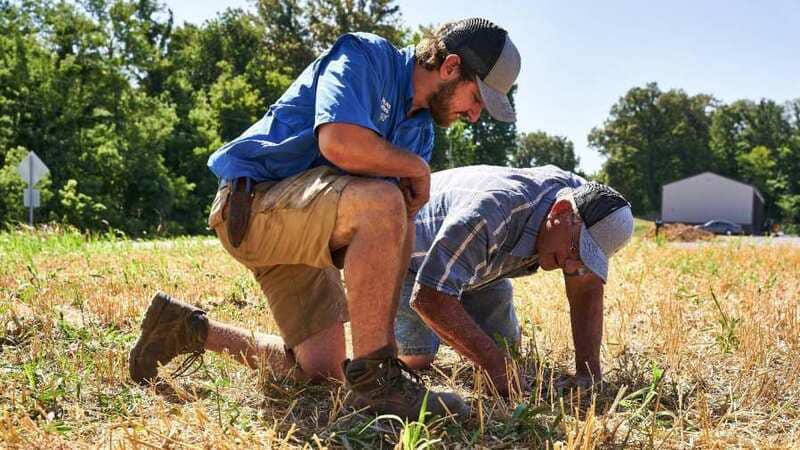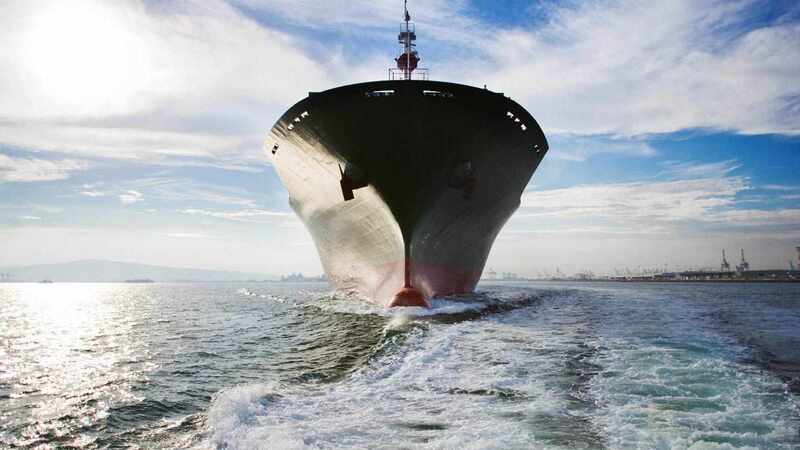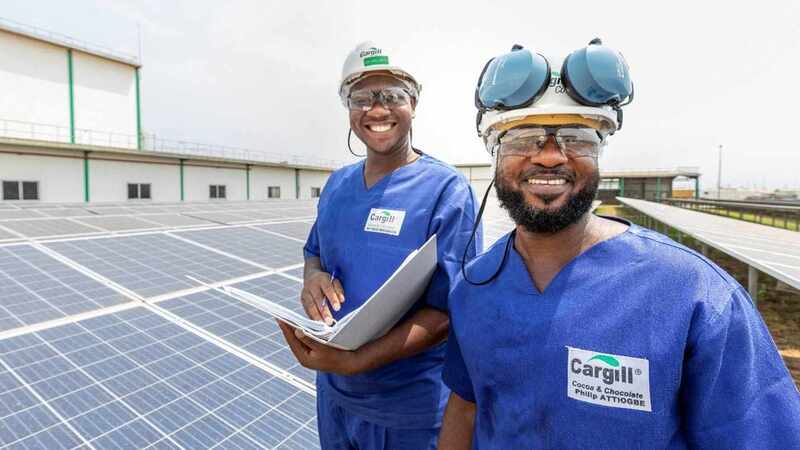Soil, sails and solar: Learn 4 ways Cargill is fighting climate change
Read Time: 8 minutes
September 20, 2022
Healthy soil. Sustainable shipping. Renewable energy. Waste-based fuel.
What do these things have in common? They’re among the many ways Cargill is working to combat one of today’s most pressing challenges: climate change.
It’s no secret that agriculture is a major contributor to climate change — comprising about 23% of human-caused greenhouse gas emissions globally, according to the World Resources Institute.
But at Cargill, we also believe agriculture is how we can help solve the climate crisis. We’re committed to using our unique role across the agriculture supply chain to fight climate change — starting at the farm.
“We’ve seen agriculture step up in big ways in the past,” says Pilar Cruz, Cargill’s chief sustainability officer. “And as we continue to partner with farmers — the stewards of our planet — I’m confident we can address some of today’s most urgent sustainability challenges.”
Here are four ways Cargill is using the power of food and agriculture to combat climate change across the globe.
1. Digging in with farmers to keep soil healthy.
To many, “regenerative agriculture” is a series of climate-friendly farming practices — like using cover crops and foregoing tilling on farmland. To Tyler Bruns, it’s simply the way he was taught to farm.

Farmer Tyler Bruns and has grandfather on their farm in Scott City, Missouri. The Cargill RegenConnect program pays farmers like Tyler to adopt regenerative agriculture practices that improve soil health and its impact on the environment.
“My grandpa has been farming with no-till and conservation practices since the 1970s,” says Bruns, of Bruns Farms in Scott City, Missouri. “We try our best to implement no-till farming practices wherever we can — trying not to disturb the soil.”
That’s because healthy soil can improve water quality, increase drought resilience, lift farmer livelihoods and even pull carbon from the atmosphere to combat climate change, among other things.
Cargill is incentivizing farmers like Tyler to keep it up. The Cargill RegenConnect program pays farmers to adopt regenerative agriculture practices that improve soil health and its impact on the environment. Earlier this year, Cargill expanded the program to farmers in 15 U.S. states. Since then, we’ve added U.S. cotton growers — rewarding them for the positive soil health practices they are already using.
With Cargill RegenConnect, we’re supporting our own climate commitments and helping our customers achieve their climate goals — whether that means reducing their carbon emissions or using a regeneratively sourced bale of cotton. Learn more about Cargill RegenConnect.
2. Cruising toward climate-friendly shipping.
In many ways, our lives are tied to the sea. As you read this, for example, thousands of ships are moving 90% of global trade across waterways.
Shipping is the most fuel-efficient means of global transportation, accounting for only 3% of emissions. But it still generates more than a billion tons of carbon dioxide and other greenhouse gases each year.
 Cargill is one of the maritime industry’s leading proponents of sustainable shipping. Our goal: zero-carbon shipping by 2050.
Cargill is one of the maritime industry’s leading proponents of sustainable shipping. Our goal: zero-carbon shipping by 2050.
“Every day we realize the magnitude of the challenge we must overcome together as an industry,” says Jan Dieleman, leader of Cargill’s ocean transportation business and chair of the Global Maritime Forum.
Today, Cargill is one of the maritime industry’s leading proponents of sustainable shipping. Our goal: zero-carbon shipping by 2050.
To get there, the company has joined the Global Maritime Forum’s Getting to Zero Coalition, which aims to power vessels along deep-sea trade routes using zero-carbon energy sources by 2030. We are using partner ZeroNorth’s software technology to lower carbon emissions on our vessels. And we’re exploring adding wind-powered sails — known as wind-assisted propulsion — to help achieve our decarbonization goals. Learn more about Cargill’s decarbonization journey in ocean transportation.
3. Solar and wind brings a new spin to our operations.
To fight climate change, we also have to look at our own impact on the planet.
At Cargill, we’ve set a goal to reduce greenhouse gas emissions across our operations 10% by 2025. To help us do this, we’re tapping into renewable energy to change the way we power our business around the globe.

By 2024, we expect renewable energy will help reduce our CO2e by 1,155,000 emissions per year — the equivalent of taking 250,000 cars off the road for one year.
Take our work in the Netherlands, where we’re partnering with Vattenfall and Windpark Hanze to build an onshore wind farm that is expected to power more than 90% of our grid-based electrical power in the country — Cargill’s largest renewable power investment and its first in Europe. The wind farm is expected to reduce carbon emissions by approximately 130,300 metric tons per year when its operational in 2023.
Or look at our efforts in the U.S., where Cargill and National Grid Renewables began operating an Illinois-based solar farm that reduces Cargill’s carbon emissions by 210,000 metric tons.
By year’s end, renewable energy sources used in our operations will have reduced our carbon dioxide equivalent emissions (CO2e) by more than 911,000 metric tons, largely through wind and solar power. And by 2024, we expect renewable energy will help reduce our CO2e by 1,155,000 emissions per year — the equivalent of taking 250,000 cars off the road for one year.
4. Using waste to help fuel the future.
Consider this: Nearly a quarter of Europe’s greenhouse gas emissions come from transportation.
Thanks to our new advanced biodiesel plant in Ghent, Belgium, we’re helping lessen that impact by taking waste and turning it into renewable fuel for the maritime and trucking industries. This, in turn, helps our customers lower their carbon footprint and supports a circular economy that gives new purpose to previously discarded products.
How does it work? The new facility — Cargill’s first waste-to-biofuel facilities and one of the largest in Europe — takes liquid waste oils and fats and turns them into advanced biodiesel.
“With advanced waste-processing technology, we are providing an innovative solution that meets global renewable energy demands, respects environmental needs and helps customers realize greenhouse gas commitments,” says Alexis Cazin, managing director for Cargill’s biodiesel and carbon business in EMEA.
For more information on how we are taking action to address climate change, please check out our 2022 global Environmental, Social, and Governance (ESG) report, summarizing our ESG programs and performance across our company for fiscal year 2022.
More stories
Can forests and farming co-exist? Yes, Cargill says in commitment to increase sustainable agriculture and protect forests in Brazil.
Through innovative programs, Cargill supports Brazilian farmers like Joel in protecting native vegetation — today and for generations to come.
Read Time: 3 minutes
Innovation solves problems. Partnered with Sustainability, it can make the planet better.
For Cargill, feeding a growing population while addressing climate change is not merely a challenge, it’s a mission.
Read Time: 3 minutes
Great plans for the Great Plains
Cargill, Burger King and National Fish and Wildlife Foundation support ranchers addressing climate change in U.S. Southern Great Plains.
Read Time: 3 minutes
